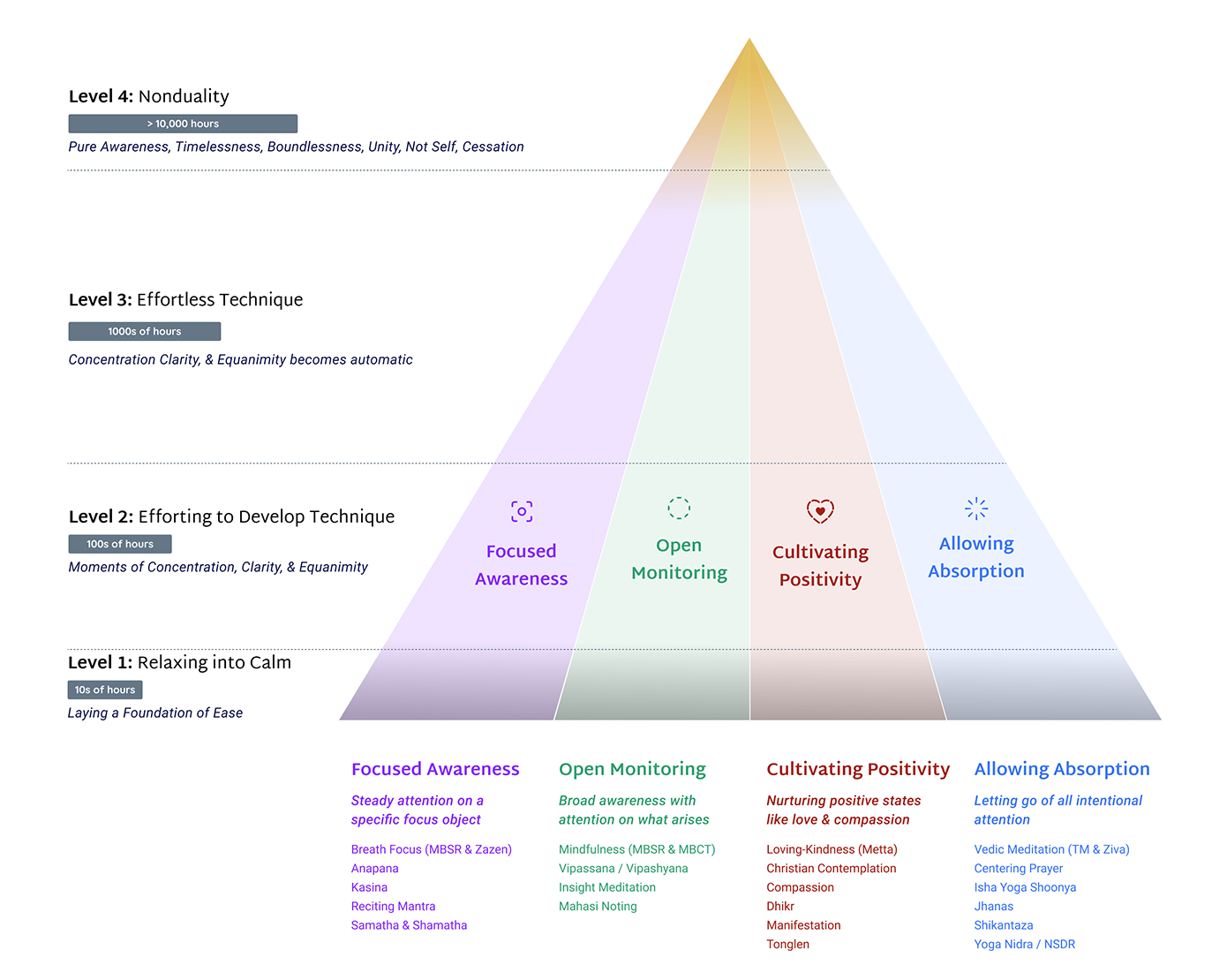
A New Taxonomy for Meditation Brainwave Science
The Problem
There have been 15 meta-studies on the EEG of meditation and they all come to the same conclusion:
We believe that treating meditation as if it were one thing will never lead to consistent, reliable results. What if sports researchers treated as all sports as one thing? They would come up with a similar hodgepodge of results, if they investigated football, tennis, bull fighting, and auto racing as if they were one thing.
We have done our own metastudy of all EEG meditation research published after 2,000 using the IMBR taxonomy. The results were much more consistent, but we still do not feel that they are good enough for building meditation neurofeedback protocols. That is because 90+% of meditation research are essentially unreplicated pilot studies with <20 subjects. It takes a lot of time and money to run meditation studies using 20+ lead EEG gear with sticky electrogel to transmit EEG signals through hair. The Muse™ headset is a breakthrough for collecting EEG data quickly and inexpensively. We use the Muse headset to collect thousands of sessions and solve the current problem of not enough diverse and replicated studies to get robust results.
The Solution
The pyramid below illustrates the IMBR taxonomy of 5 meditation styles and 4 levels presented as 13 brain states. The common names for these meditation practices are below the pyramid. It is our hypothesis that this taxonomy is the minimum number of meditation states that could produce similar enough brain states to get statistically significant results that are also robust and replicable.
IMBR Taxonomy of Meditation Categories & Techniques
Meditation research has been stymied by poor taxonomy. For consistent, reliable results we can’t treat meditation as one thing. We must distinguish a minimum of 4 meditation categories and 4 levels of expertise. At the bottom of the pyramid, we list the meditation techniques that fit in each meditation category.

Our goal is to gather 10,000 sessions by 1,000 meditators.
Each session is categorized by style & level, plus annotated for depth.
Here's the plan:
- Analyze the deep and shallow sections of these sessions using >1,000 EEG metrics and 12 million seconds of EEG data.
- Group the results according to the 13 categories in the IMBR taxonomy, and put them through an analytical pipeline that finds the most reliable indicators of depth.
- Create neurofeedback protocols to help people go deeper, faster to any of the targeted meditation states with fewer wrong turns. At this point, we'll release "GoDeeper: GPS for meditation" as a neurofeedback based meditation trainer using the Muse headset.
-
Create specialized neurofeedback protocols for specific meditation techniques like MBSR,
Jhana 10-4 , Vipassana, TM, Ziva, etc. and train meditation coaches to create custom protocols for their clients.
So please apply and recruit your meditating friends to join our study and get your style of meditation fully analyzed!
